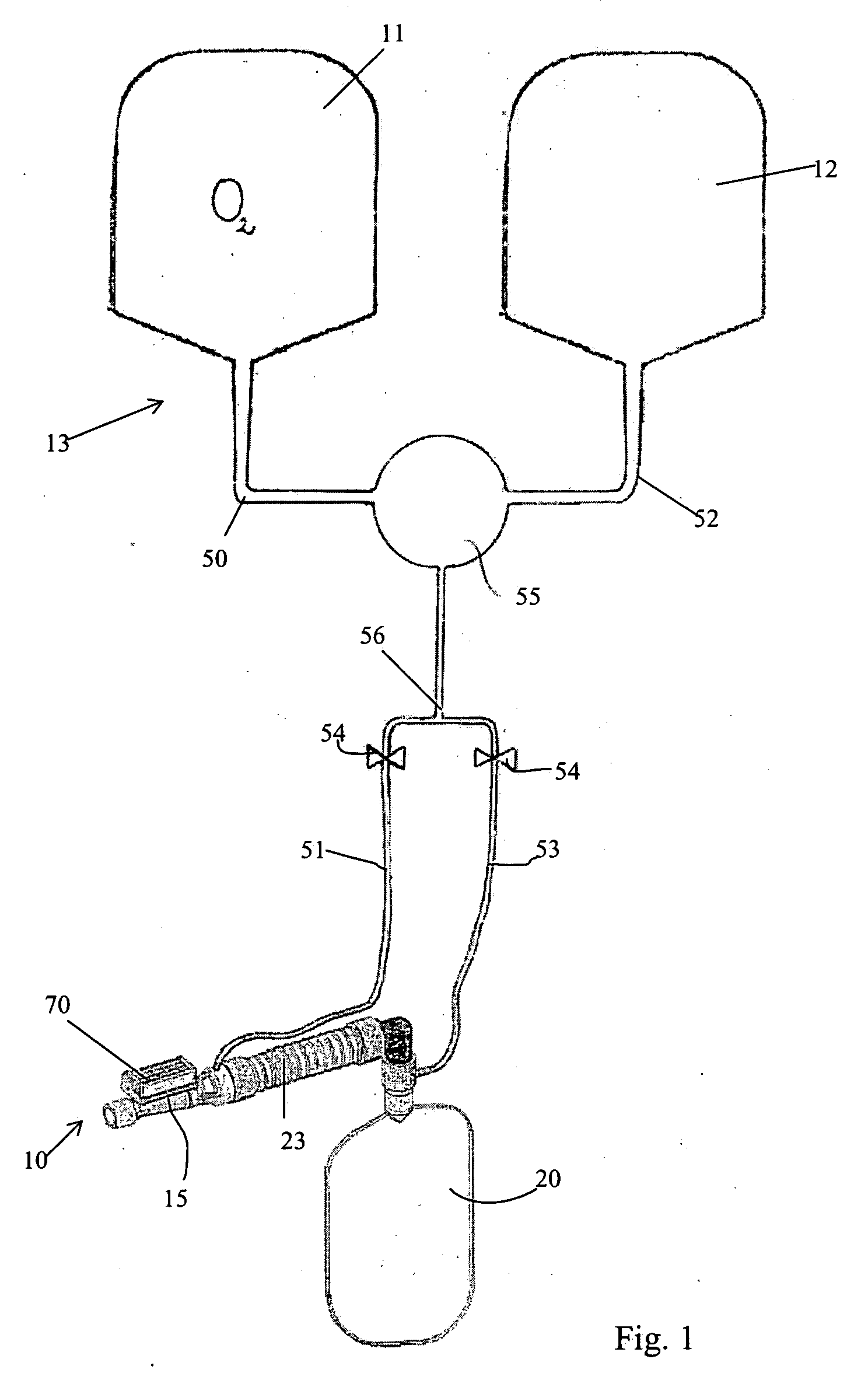Medical device for a patient's ventilatory support
a ventilatory support and medical device technology, applied in the direction of medical devices, valve details, operating means/releasing devices, etc., can solve the problems of progressive respiratory insufficiency, high gas consumption (60-120 litres per minute), and have not been overcom
- Summary
- Abstract
- Description
- Claims
- Application Information
AI Technical Summary
Benefits of technology
Problems solved by technology
Method used
Image
Examples
Embodiment Construction
[0042] With reference to the attached figures, a ventilatory support device in continuously positive air pressure (CPAP) is indicated with reference number 10.
[0043] Preferably, the entire device 10 is of the disposable type and it is made entirely of plastic.
[0044] As it shall be better illustrated hereafter, in the illustrated solution, the device 10 is associated with a system 13 for feeding pressurised oxygen comprising a pure oxygen source 11 and an air source 12 having a known oxygen content.
[0045] Hereafter in the description, by way of example, reference will be made to the supply system, even if nothing forbids that the device 10 can be associated with a single pure oxygen source or with a single air source. Even more specifically, with reference to FIGS. 2-5 and 9, the device 10 comprises a substantially tubular shaped body 15 that is made, in the case of the illustrated solution, of a front portion 15a (FIGS. 4a, 4b) and a rear portion 15b (FIGS. 3, 7a, 7b) joined toge...
PUM
 Login to View More
Login to View More Abstract
Description
Claims
Application Information
 Login to View More
Login to View More - R&D
- Intellectual Property
- Life Sciences
- Materials
- Tech Scout
- Unparalleled Data Quality
- Higher Quality Content
- 60% Fewer Hallucinations
Browse by: Latest US Patents, China's latest patents, Technical Efficacy Thesaurus, Application Domain, Technology Topic, Popular Technical Reports.
© 2025 PatSnap. All rights reserved.Legal|Privacy policy|Modern Slavery Act Transparency Statement|Sitemap|About US| Contact US: help@patsnap.com



